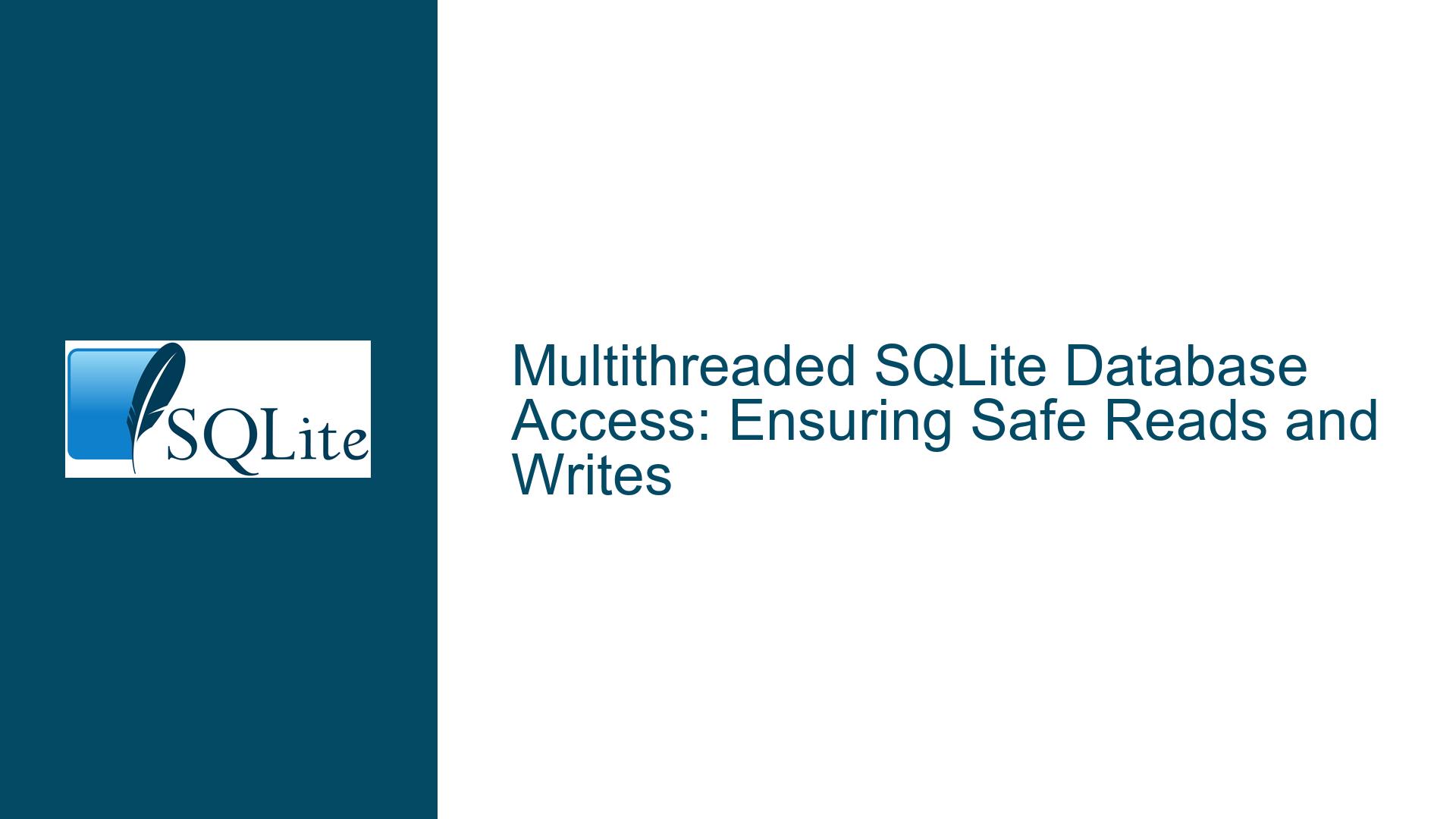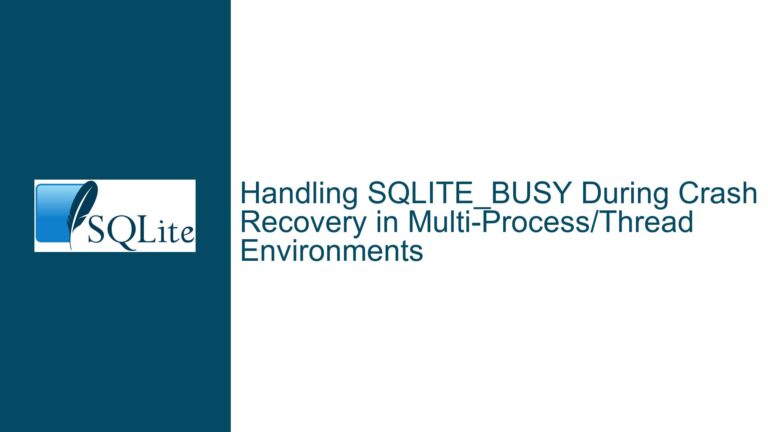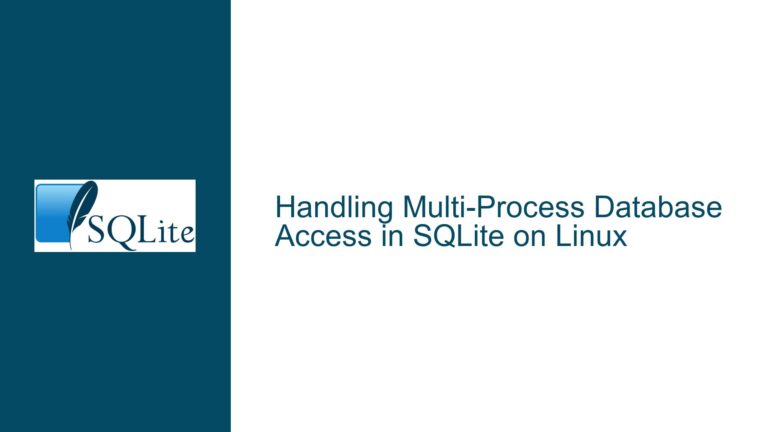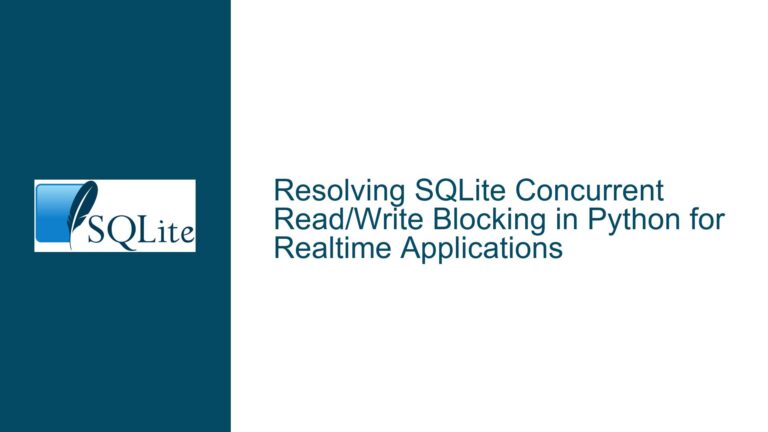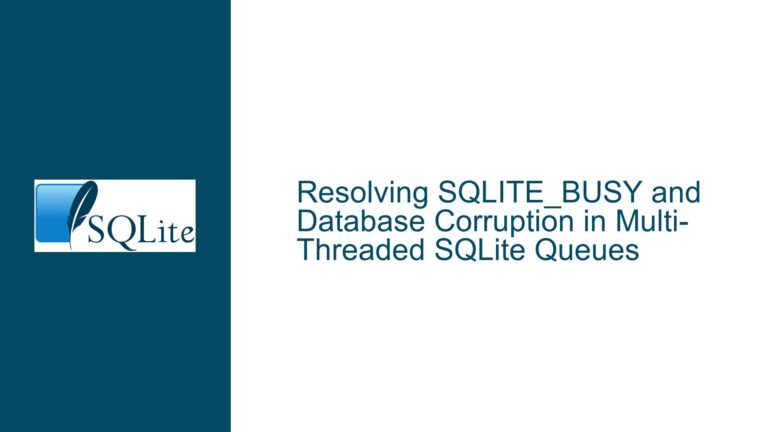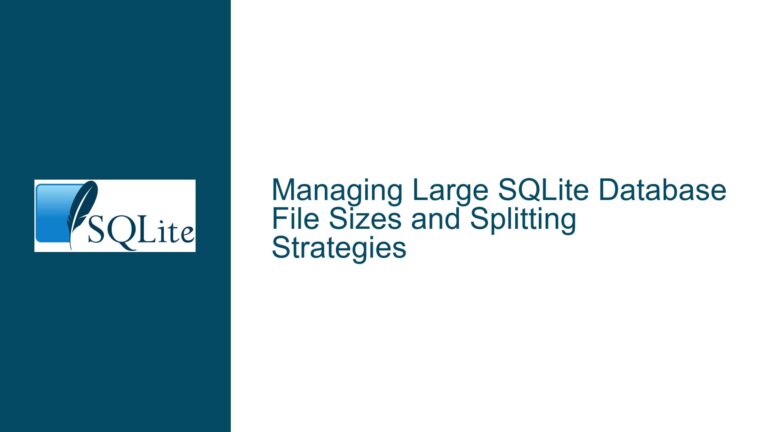Multithreaded SQLite Database Access: Ensuring Safe Reads and Writes
Multithreaded SQLite Access and Transaction Serialization
When dealing with multithreaded applications that require concurrent access to a single SQLite database, understanding how SQLite handles connections, transactions, and isolation is crucial. SQLite is designed to be a lightweight, serverless database, which means it does not inherently support multiple threads writing to the database simultaneously without proper synchronization. However, SQLite does provide mechanisms to ensure that writes are serialized and that data integrity is maintained, provided the application is designed correctly.
The core issue arises when multiple threads attempt to read and write to the same SQLite database concurrently. While SQLite can handle multiple read operations simultaneously, write operations require exclusive access to the database. This means that if two threads attempt to write to the database at the same time, one will have to wait until the other completes its transaction. SQLite achieves this through its locking mechanism, which ensures that only one write operation can occur at any given time.
However, the challenge is not just about ensuring that writes are serialized. It is also about ensuring that the order of operations is preserved and that each thread sees a consistent view of the database. This is where transactions come into play. By wrapping a series of read and write operations in a transaction, you can ensure that either all the operations succeed, or none of them do. This atomicity is crucial for maintaining data integrity, especially in a multithreaded environment.
In the context of the discussion, the primary concern is whether SQLite can handle multithreaded access without requiring additional synchronization mechanisms in the application code. The answer is that SQLite can handle this, but only if each thread operates on its own database connection. SQLite serializes writes at the connection level, meaning that if each thread has its own connection, SQLite will ensure that writes are serialized correctly. However, if multiple threads share a single connection, then the application must implement its own synchronization mechanism to ensure that only one thread accesses the connection at a time.
Connection-Level Isolation and Thread Safety
One of the key points raised in the discussion is that SQLite’s isolation and serialization operate at the connection level, not the thread level. This means that if multiple threads share a single connection, they will all be part of the same transaction context. This can lead to issues where one thread’s uncommitted changes are visible to other threads using the same connection, which is generally not desirable.
To avoid this, each thread should have its own connection to the database. This ensures that each thread operates in its own isolated context, and changes made by one thread are not visible to others until they are committed. SQLite will then handle the serialization of writes across these connections, ensuring that only one write operation occurs at a time.
It is also important to note that SQLite is serially entrant per connection. This means that while multiple threads can share a single connection, only one thread can execute a command on that connection at any given time. If one thread is executing a command, any other thread attempting to use the same connection will have to wait until the first thread completes its operation. This is a consequence of how SQLite is built and cannot be changed.
In practice, this means that if you have multiple threads that need to perform read and write operations, each thread should open its own connection to the database. This allows SQLite to manage the isolation and serialization of transactions for each thread independently. By doing so, you can avoid the need for additional synchronization mechanisms in your application code, as SQLite will handle the serialization of writes for you.
Implementing Thread-Safe SQLite Access with Transactions
To implement thread-safe access to an SQLite database, you need to ensure that each thread has its own connection and that all write operations are wrapped in transactions. This ensures that each thread’s changes are isolated from others until they are committed, and that the order of operations is preserved.
When a thread needs to perform a write operation, it should begin a transaction, perform the necessary writes, and then commit the transaction. This ensures that either all the writes succeed, or none of them do. If a thread needs to perform a series of related read and write operations, these should also be wrapped in a single transaction to ensure consistency.
For example, consider a scenario where a thread needs to download a file from a remote source and store it in the database. The thread should begin a transaction, download the file, write it to the database, and then commit the transaction. This ensures that if the download fails or the write operation fails, the transaction can be rolled back, and the database will remain in a consistent state.
In addition to using transactions, it is also important to handle errors gracefully. If a write operation fails, the thread should catch the error, roll back the transaction, and handle the error appropriately. This might involve retrying the operation, logging the error, or notifying the user.
Another consideration is the use of prepared statements. Prepared statements can improve performance by allowing SQLite to compile the SQL statement once and execute it multiple times with different parameters. However, prepared statements are tied to a specific connection, so each thread should prepare its own statements on its own connection.
Finally, it is worth considering the use of SQLite’s PRAGMA commands to configure the database for multithreaded access. For example, setting PRAGMA journal_mode=WAL can improve performance in a multithreaded environment by allowing concurrent reads and writes. The WAL (Write-Ahead Logging) mode allows readers to continue reading from the database while a write operation is in progress, which can significantly improve performance in a multithreaded application.
In summary, implementing thread-safe access to an SQLite database involves ensuring that each thread has its own connection, wrapping write operations in transactions, handling errors gracefully, and using appropriate PRAGMA settings to optimize performance. By following these best practices, you can ensure that your multithreaded application can safely and efficiently access an SQLite database.
